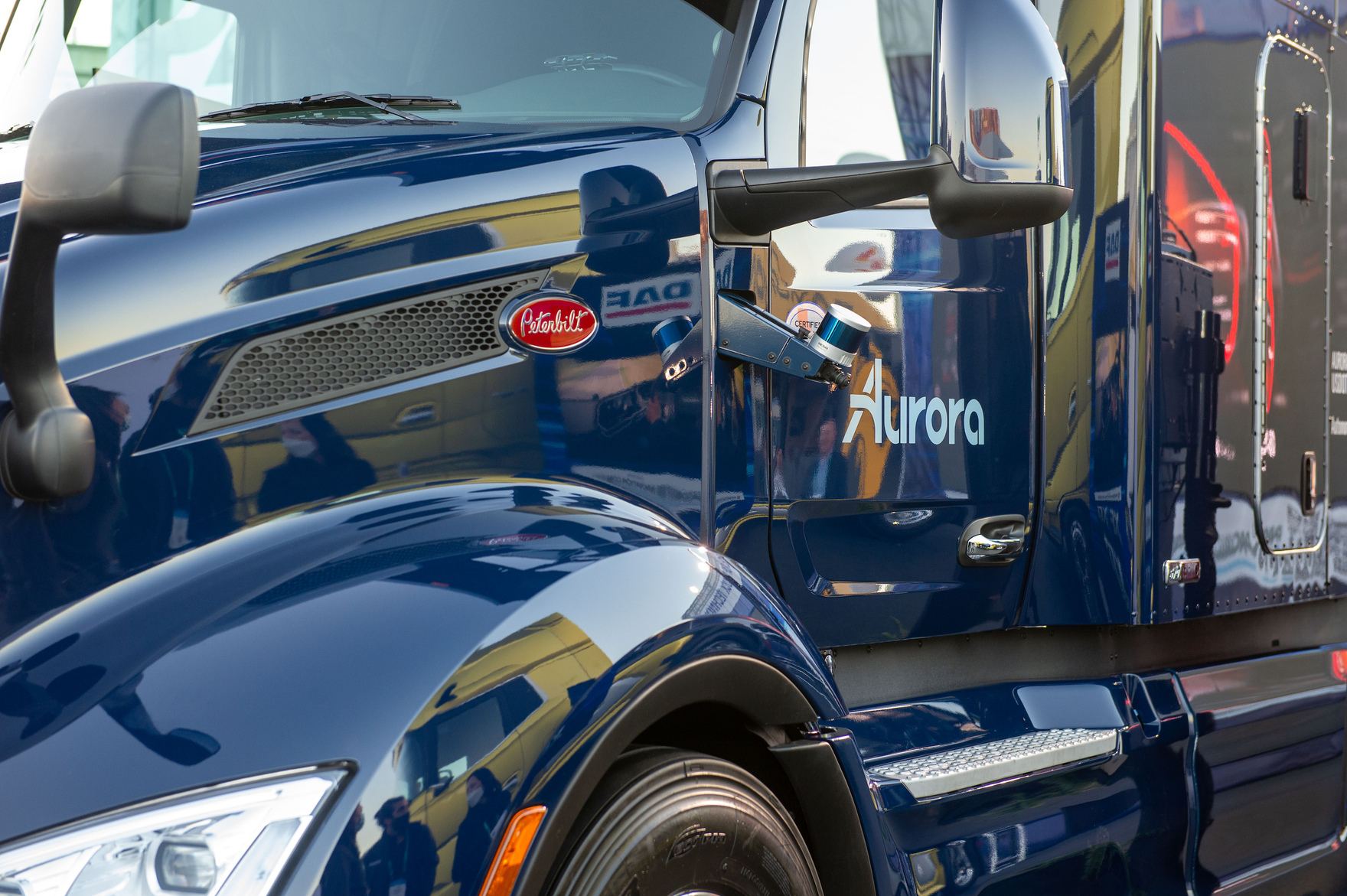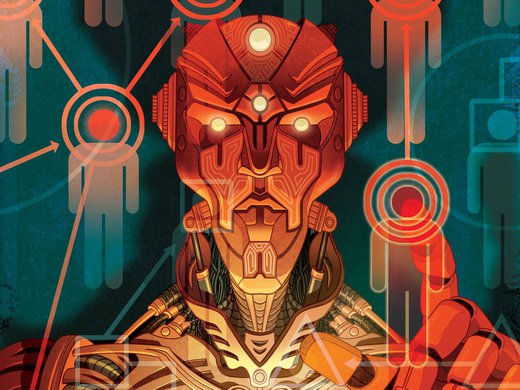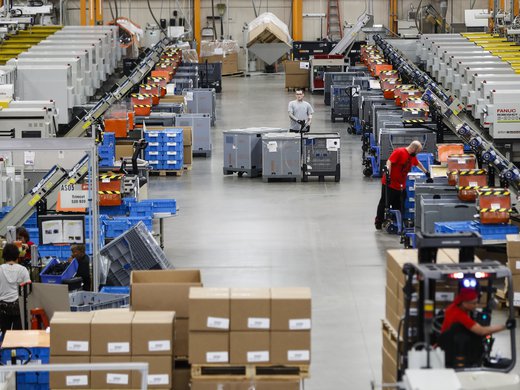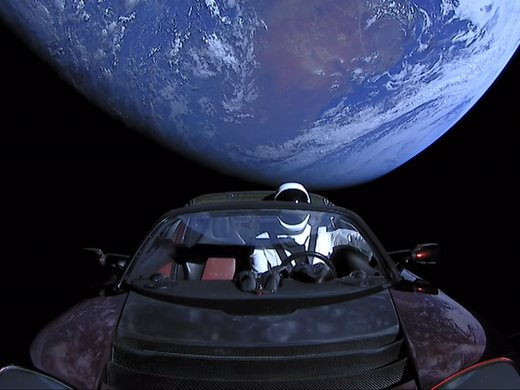In December 2021, a semi-trailer truck eased out of a rail yard in Tucson, Arizona and into traffic, then travelled 129 kilometres without incident to a distribution facility in Phoenix, all without a driver behind the wheel.
TuSimple, the San Diego tech company behind the journey, says it was the first fully autonomous run by a semi-truck on open public roads without human intervention — something it hopes will soon be routine. That will offer big savings to transport companies, since driver costs account for about 40 percent of trucking expense. At a time of strained supply lines, that looks good to shippers.
And unlike human truckers, artificial intelligence doesn’t sleep. A driverless truck can make the run from Los Angeles to Dallas in 24 hours, not three days, according to Aurora, a self-driving truck company that plans to launch an “autonomous freight” business next year in Texas, in cooperation with Uber.
Texas, land of wide open spaces, long roads and accommodating regulators, is the heartland of the nascent business. Although driverless trucks are not yet rolling, last year Waymo and J. B. Hunt began a “test run” between Houston and Fort Worth, moving 862,179 pounds of freight with “safety drivers” aboard, reportedly without incident. Real estate developers with an eye on the future are starting to build “autonomous truck ports” into their plans.
There are safety questions to be ironed out, of course. But boosters say that with their sensors and cameras, driverless trucks can see farther and react to road hazards 10 times more quickly than human drivers.
The biggest barrier is likely to be psychological: convincing a leery public that it’s acceptable to share the road with enormous driverless rigs. If the industry can handle that challenge, and if the whole project isn’t shut down after the first fatal accident, everyone ought to win — except, of course, the truck drivers who will lose their jobs.
That is a prospect that ought to be concerning for everyone.
There are a lot of truckers: about two million people make a decent living hauling freight on America’s highways. They won’t disappear overnight, and many people will still be employed in the business. But driverless long-haul semis threaten to vaporize a lot of good jobs currently occupied primarily by American men with no post-secondary education.
Steve Viscelli, a sociologist at the University of Pennsylvania who studies the industry, foresees a shift from relatively high-paying jobs to lower-paying jobs. The first to be laid off will be long-haul truckers who do little but drive, because their work can be automated more easily than drivers who also load and unload freight.
Those long-haul drivers are often older, better paid and more likely to be unionized than short-haul drivers. Delivery drivers, who are often independent contractors barely managing to pay their bills, will not be replaced by machines any time soon.
This shift will tend to push down living standards for people near the bottom of the socio-economic ladder, exacerbating inequality and the attendant social problems.
Economist Daron Acemoglu, of the Massachusetts Institute of Technology, has been observing this trend and warning of the consequences. In testimony to a congressional committee in November 2021, he boiled down his findings: “Worker groups suffering larger task displacement — the ones employed in routine tasks that can be automated in industries undergoing rapid automation — have almost uniformly experienced large declines in their real wages. These groups include all demographic categories with less than a college degree. In contrast, groups that have not experienced much direct automation, including those with post-graduate degrees and women with college degrees, have seen their earnings increase rapidly over the last 40 years.”
According to Acemoglu’s research, automation accounts for 50 to 70 percent of erosion in wages for workers — 10 times as significant as the effect of offshoring.
Acemoglu and Boston University’s Pascual Restrepo point to “so-so technologies,” forms of automation that replace workers without broadly increasing productivity — automatic telephone customer service, for example, and retail self-checkouts.
During the four decades after the Second World War, new technologies produced “productivity effects” that buoyed living standards across the board, their research shows. Since 1987, though, new technologies have destroyed more jobs than they have created, pushing people at the bottohttps://www.newsweek.com/what-happens-when-human-truckers-are-replaced-ai-opinion-1675106m of the economic system further down.
The challenge for policy makers is real and urgent.
What happens when workers without college degrees find themselves sliding down the economic ladder, unable to pay their bills? Deaths of despair — from suicide, heart disease and substance abuse. The trend is also linked to an increase in support for authoritarian populism.
A growing number of economists are raising alarms and proposing solutions — most importantly, perhaps, changes to tax codes, which now encourage employers to adopt technologies that displace workers since, in the United States, labour is taxed at a higher rate than capital.
Policy makers had better be paying attention and making plans, because none of us should want to live in a world where hundreds of thousands of truckers are suddenly thrown out of work, facing hugely diminished economic prospects. It’s a recipe for social disaster with consequences so widespread that they will inevitably affect those comfortable people whose jobs aren’t threatened — yet — by automation.
This article first appeared in Newsweek.



